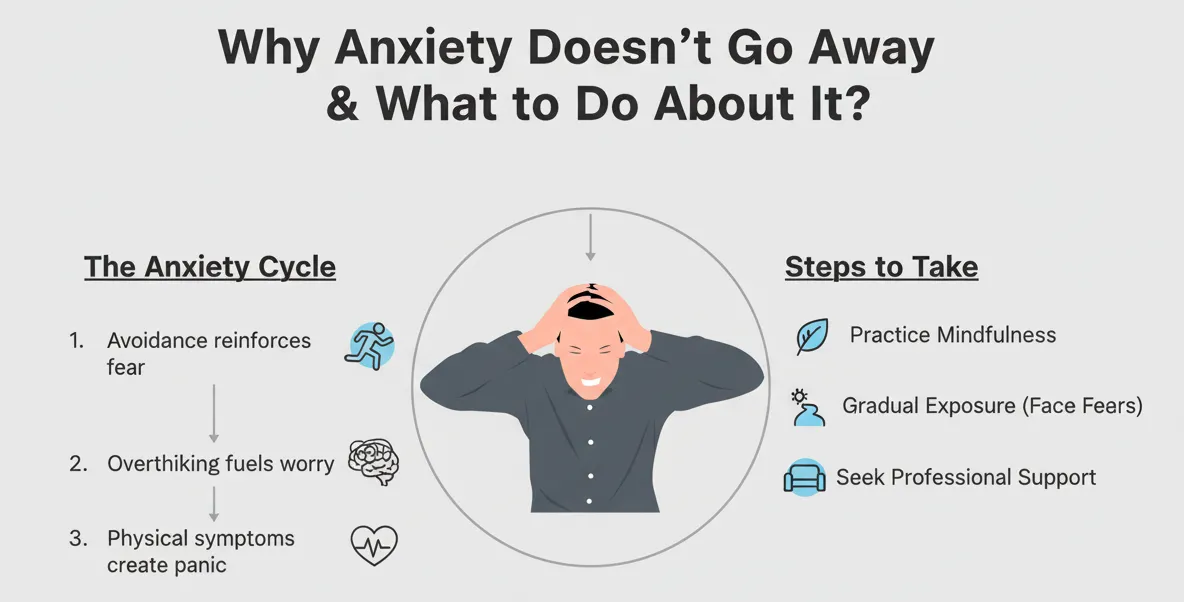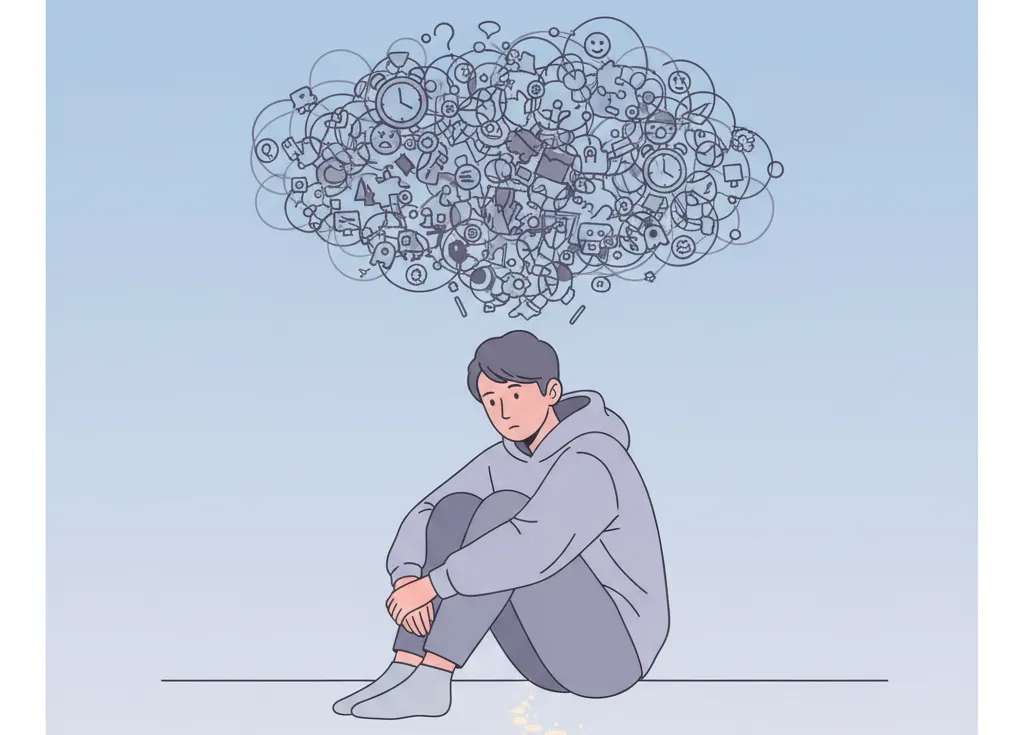Anxiety is one of the most common struggles people face today. You may notice it as a constant tightness in your chest, racing thoughts, or that restless feeling that just won’t leave you alone. For some, it shows up as overthinking everything. For others, it feels like fear or dread for no clear reason.
If you’ve ever asked yourself “Why won’t this anxiety just go away?” — you are not alone. Millions of people silently carry the same question. The truth is, anxiety is not just about being “weak” or “too sensitive.” It’s your mind and body trying to protect you — but sometimes that system gets stuck in overdrive.
In this blog, we’ll explore why anxiety doesn’t simply vanish on its own, and more importantly, what you can do about it.
Why Anxiety Doesn’t Just Go Away?
1. It’s a Learned Response:
Our brains are designed to keep us safe. If at some point you experienced stress, danger, or humiliation, your brain “learned” to stay alert. Over time, even when the actual danger is gone, your brain may continue sending anxiety signals — almost like a smoke alarm that keeps ringing even when there’s no fire.
2. Unprocessed Emotions:
Many people push their feelings aside — maybe because they were told “don’t cry,” “be strong,” or “just ignore it.” But emotions that are not expressed or processed often resurface as anxiety. It’s like putting clothes in a washing machine and never pressing the drain button — everything just keeps swirling around inside.
3. Negative Thought Loops:
Anxiety feeds on thoughts like “What if something goes wrong?” or “I can’t handle this.” The more you think these thoughts, the stronger the anxiety feels. It becomes a cycle — thoughts fuel anxiety, and anxiety fuels more thoughts.
4. Biological & Lifestyle Factors:
Poor sleep, too much caffeine, hormonal changes, or even genetics can all play a role in keeping anxiety alive. When your body is tired or chemically unbalanced, your mind becomes more vulnerable to anxious thoughts.
5. Avoidance Keeps It Alive:
Here’s a hard truth: the more you avoid what makes you anxious, the more power it gains. For example, if you feel anxious about social gatherings and keep avoiding them, your brain learns “these situations must be dangerous,” and anxiety grows stronger each time.

What You Can Do About Anxiety?
The good news is — anxiety can be managed, reduced, and in many cases, completely transformed. It’s not about “fighting harder,” but about working with your mind and body in the right way.
1. Acknowledge It Without Judgment:
The first step is to accept that anxiety is here — without labeling yourself as “weak” or “broken.” Instead of saying “I hate my anxiety,” try shifting to “I notice I’m feeling anxious, and that’s okay for now.”
This small change takes away some of the power anxiety holds over you.
2. Break the Thought Cycle:
When you catch yourself overthinking, pause and ask:
Is this thought 100% true?
What’s the evidence for and against it?
Is there a more helpful way to see this?
This is a core technique from Cognitive Behavioral Therapy (CBT) that helps people break free from anxiety’s grip.
3. Reconnect with Your Body:
Since anxiety is both mental and physical, calming your body helps calm your mind. Try:
Breathing techniques: Slow, deep breaths signal your brain that you are safe.
Grounding exercises: Focus on what you can see, hear, and touch in the moment.
Movement: Simple walking, stretching, or yoga releases stored tension.
4. Process Old Wounds:
Often, anxiety today is linked to pain from the past — childhood criticism, betrayal, or trauma. Working with a therapist helps you reframe those experiences and release the emotions that were never fully expressed. Once these are healed, your present anxiety begins to ease naturally.
5. Change Daily Habits:
Small adjustments make a big difference:
Prioritize 7–8 hours of quality sleep.
Limit caffeine and sugar.
Spend time in nature or sunlight.
Practice gratitude journaling to shift focus from fear to possibility.
6. Face, Don’t Avoid:
Remember the avoidance trap? Try gradual exposure. If social situations make you anxious, start with a small step — like greeting one new person — instead of avoiding completely. Each small success tells your brain: “See? I can handle this.”
7. Seek Professional Help:
Sometimes anxiety feels too overwhelming to handle alone. That’s where therapy makes a difference. Techniques like CBT, NLP reframing, mindfulness-based therapy, or trauma-informed approaches can help you break the cycle.
A Gentle Metaphor: The Knot in the Rope
Imagine anxiety as a tangled knot in a rope. The harder you pull against it, the tighter the knot becomes. But when you patiently loosen it strand by strand, the knot begins to release.
Your anxiety works the same way. It won’t disappear just by pulling harder. It eases when you gently, consistently work with it — one layer at a time.
Final Thoughts:
If anxiety hasn’t gone away despite your efforts, it doesn’t mean you’re hopeless. It simply means your mind is asking for a different approach.
You don’t have to live with constant heaviness.
You don’t have to keep fighting battles in your own head.
You can learn to live lighter, calmer, and more peaceful — step by step.
Healing from anxiety isn’t about becoming someone else. It’s about returning to who you really are, underneath the worry, the fear, and the noise.
If you’ve been waiting for a sign to begin, this is it.
Reach out today — and let’s take that first step toward your calm, confident self.


